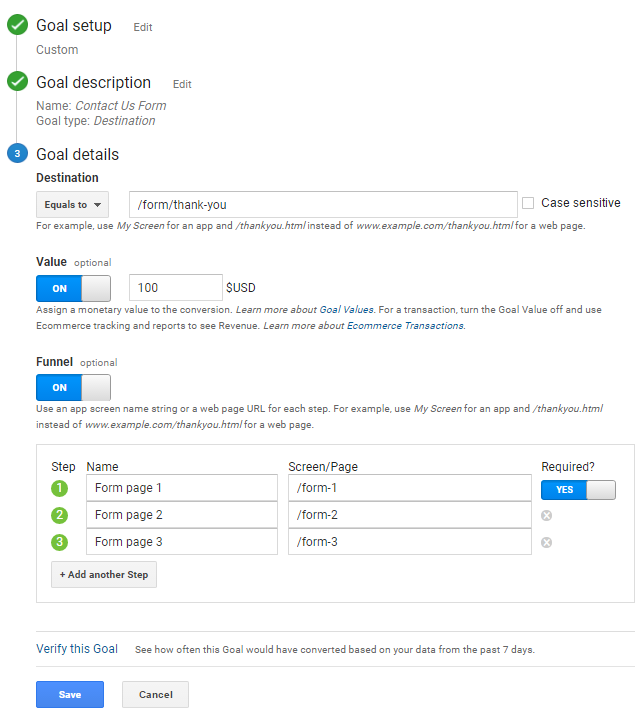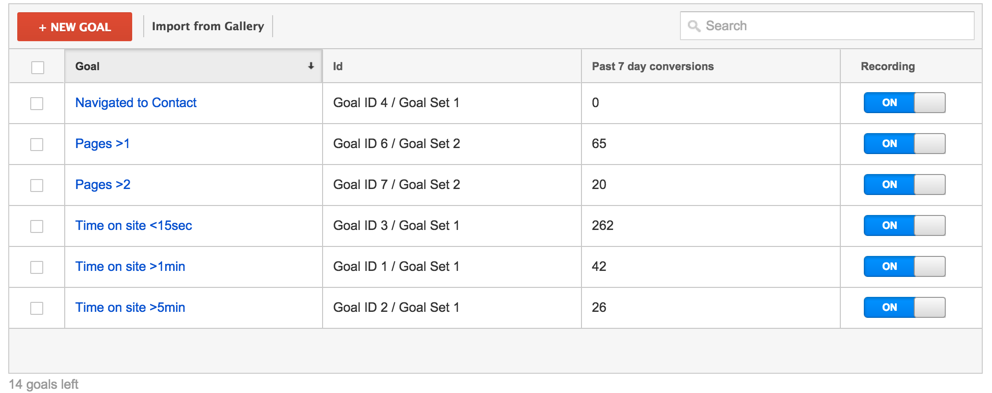Introducing the Blind Attractions: Comprehending What Google Analytics Goals Can not Gauge
In the world of digital analytics, Google Analytics stands as a powerful tool for tracking and examining on-line customer interactions. Amidst its durable capacities, there exist blind areas that typically avert dimension. what data is google analytics goals unable to track. Comprehending what Google Analytics objectives can not measure is crucial for getting a comprehensive view of individual actions and interaction. As we explore the details of these dead spots, we uncover a complex internet of undiscovered areas that hold important insights right into user actions and motivations, difficult traditional knowledge and clarifying the constraints of our data-driven understanding.
Customer Habits on External Platforms
Understanding exactly how users engage on exterior systems is vital for enhancing on the internet approaches. Exterior systems, such as social media networks, reference websites, and online forums, play a significant role in driving web traffic to a company's website. By examining customer behavior on these systems, companies can get valuable understandings right into the efficiency of their advertising initiatives and the preferences of their target market.
One trick aspect of individual behavior on exterior systems is the recommendation source. By tracking where the individuals are coming from, organizations can determine which systems are driving the most traffic to their web site. This information can assist business assign their resources a lot more effectively, concentrating on the systems that produce the most effective outcomes.

Offline Conversions and Interactions
Assessing individual behavior on outside systems provides important insights into on the internet approaches; however, taking into consideration offline conversions and interactions is equally critical for a comprehensive understanding of a company's total performance. While Google Analytics succeeds at tracking online interactions, it falls brief in recording the total customer journey that usually consists of offline touchpoints. Offline conversions, such as in-store purchases or phone queries, play a substantial duty in many businesses' success. Neglecting these interactions can result in an altered view of the efficiency of marketing campaigns and overall business performance.

Acknowledgment Beyond Last Click
When diving into the world of digital marketing analytics, it becomes important to look past the solitary touchpoint of the last click for an extra comprehensive understanding of attribution. While Google Analytics provides valuable understandings right into customer behavior, counting solely on last-click acknowledgment can be limiting - what data is google analytics goals unable to track. Acknowledgment models that go past the last click supply an extra nuanced view of the customer journey, taking into account all the touchpoints that bring about a conversion
Attribution past the last click allows online marketers to appoint Read Full Article credit report to various interactions along the conversion course, offering a more clear photo of the performance of different marketing channels. By discovering multi-touch attribution models such as direct, time degeneration, or position-based acknowledgment, businesses can better allocate their advertising and marketing budgets and enhance their approaches for optimal impact.
Understanding the influence of each touchpoint in the conversion process is essential for making educated choices and making the most of ROI. By accepting acknowledgment beyond the last click, services can gain much deeper insights into client behavior and tailor their marketing efforts much more efficiently.
Cross-Device and Cross-Browser Tracking

Likewise, cross-browser monitoring enhances cross-device tracking by recording individual behavior as they change in between various internet internet browsers. Understanding just how individuals connect with web sites on various web browsers can aid marketing experts maximize their on the internet experiences to ensure consistency and useful reference functionality across different systems.
Qualitative Information and Customer Intent
Understanding user intent via qualitative information evaluation is critical for creating targeted digital marketing approaches that reverberate with the requirements and choices of the target market. Qualitative information gives understandings right into the 'why' behind individual activities, shedding light on motivations, feelings, and choices that measurable data alone can not capture. By analyzing user comments, remarks, and communications, online marketers can uncover valuable details concerning individual intent, enabling them to tailor their messaging, material, and offerings to much better line up with what their audience is looking for.
Qualitative information also aids in recognizing the context in which customers involve with a site or app. This contextual understanding enables marketing experts to develop more personalized and appropriate experiences, inevitably driving higher interaction and conversion rates. By diving into customer intent via qualitative information analysis, services can gain a much deeper understanding of their target market, leading to a lot more reliable advertising strategies that fulfill individuals' assumptions and needs.
Final Thought
Finally, Google Analytics objectives have limitations in gauging customer habits on external systems, offline conversions, acknowledgment beyond last click, cross-browser and cross-device monitoring, and qualitative information connected to individual intent. what data is google analytics goals unable to track. It is necessary for organizations to be familiar with these unseen areas in order to supplement their data evaluation with other devices straight from the source and approaches to gain a much more thorough understanding of their audience and improve their overall electronic marketing approaches
By examining user actions on these systems, services can gain important insights into the efficiency of their marketing initiatives and the choices of their target audience.
Assessing individual behavior on external platforms gives valuable insights into on-line approaches; however, considering offline conversions and communications is similarly essential for an extensive understanding of a business's general performance.In electronic marketing analytics, relocating past last-click attribution to explore cross-device and cross-browser monitoring is important for gaining an all natural understanding of customer communications throughout various systems and gadgets. By evaluating customer responses, comments, and communications, marketing professionals can uncover important details regarding user intent, permitting them to tailor their messaging, content, and offerings to much better line up with what their audience is looking for.
By diving into user intent via qualitative information analysis, companies can acquire a much deeper understanding of their target audience, leading to a lot more efficient advertising techniques that satisfy users' assumptions and requirements.